5 Essential SEO Trends for 2019 You Can Put into Practice Immediately
It’s that time of year to already start asking our marketing selves…
How can we begin 2019 with a pop, sizzle, or a bang?
Better yet, what can we do right now to ensure we get nothing but positively sparkling results (like the fizz in champagne) as we think about a new calendar year? Achieve the ROI we’ve been looking for? Make sure our online content hits the mark?
How about finally earn more killer organic Top Three spots in Google we’ve been hankering for, for months?
Today, I’m sharing with you five key SEO trends for 2019 that I think will be big.
In fact, I think they’ll play a major role in content ranking success (or failure). Follow along and let’s see what tactics, strategies, and more will help you have a banner year, including SEO tips from today that are still relevant.
5 Must-Do SEO Trends for 2019 to Follow Today
Unsurprisingly, SEO trends in 2019 are all about keeping up with technology, staying on top of Google’s latest developments, and reinforcing your commitment to content. Let’s get right to it.
1. Be Mobile-Ready for Mobile-First Indexing
Our first trend is one that’s continuing from recent SEO trends in 2018.
Back on March 26, 2018, Google announced they were rolling out mobile-first indexing on their Webmaster Central Blog.
Previously, Google web crawlers looked at the desktop version of your pages and content to populate the SERPs. However, with the switch to mobile-first, this means that Google will be looking at the mobile version of your pages for indexing and ranking.
So, what if you don’t have a mobile version of your website? (Oh, the horror.)
What happens?
Google will still look at your desktop site version to rank your pages.
HOWEVER:
Your pages probably won’t display properly for users on mobile devices (or they’ll be difficult to navigate, read, and use).
THUS:
Your page rankings will most likely suffer (if they haven’t already).
In other words, why haven’t you updated your website for mobile browsing yet?
To be as mobile-friendly as possible for all shapes, sizes, and types of devices, Google first and foremost recommends using responsive design.
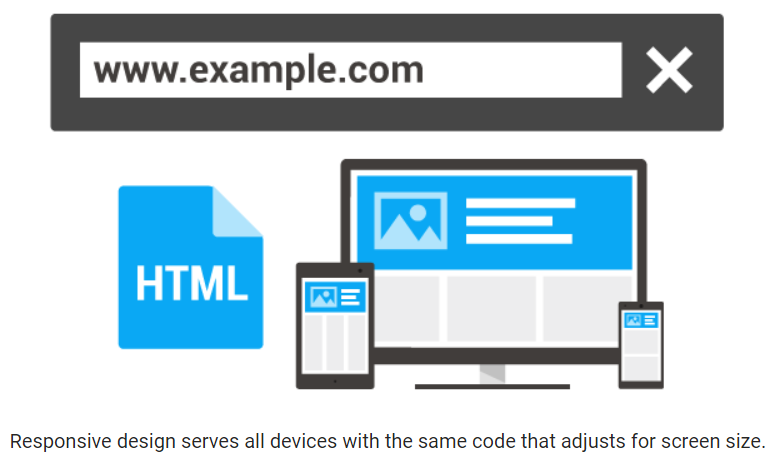
However, if you have two versions of your website (a desktop version and a mobile version), the search engine has some best practices you can follow for good results (via the Google Developers guide):
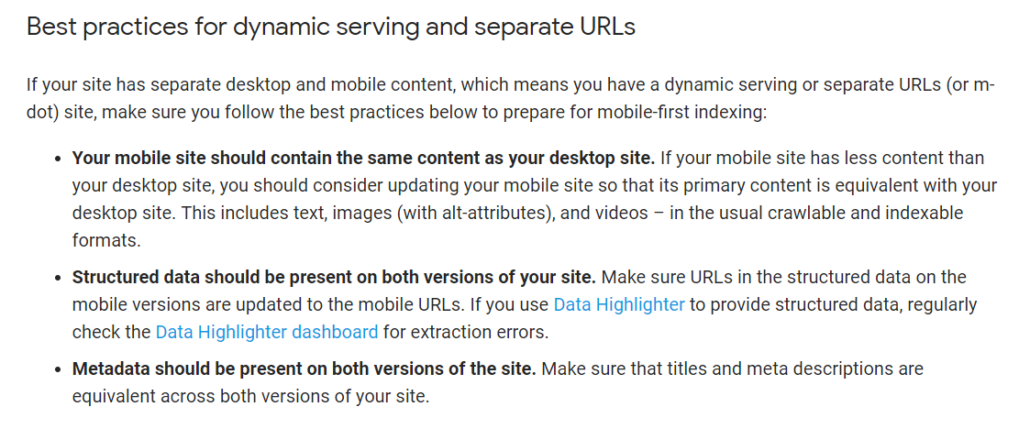
These best practices include:
- Making sure your mobile and desktop sites have exactly the same primary content
- Including metadata like titles and descriptions on both site versions
- Including structured data for both site versionsFor best results, ensure you have all of the above items checked for your site. What worked for technical SEO in 2018 will roll over to 2019.Lastly, consider updating your site design so it’s responsive – it’s a better practice for the overall mobile user experience (UX).
2. Featured Snippets Rankings Will Go Up in Value
Overwhelmingly, featured snippets are taking over the top spot in Google rankings for lots of keywords.
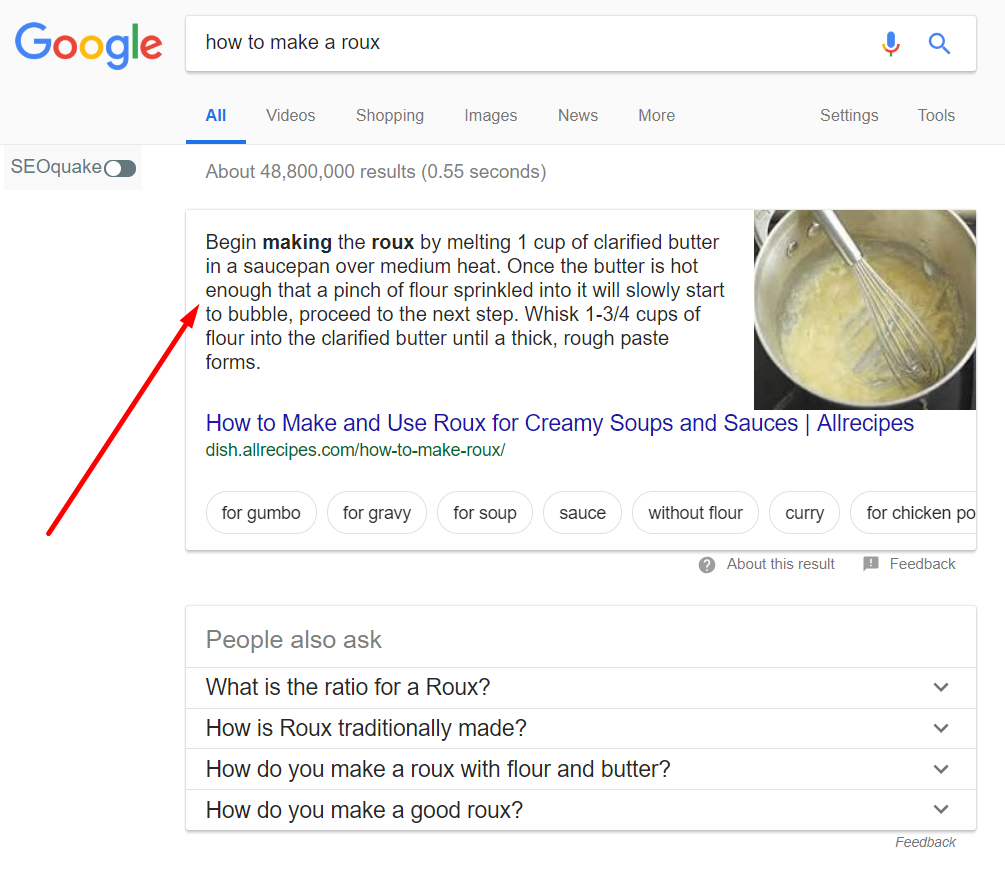
This is a big deal – users see these results at the top of the page, where the #1 ranked piece of content used to appear. In other words, that prime real estate is no longer guaranteed. Many marketers are thus calling this highly desirable snippet spot “position zero.”
Naturally, you should want key pieces of your content to shoot to top placements in featured snippets – but how?
A. Create Content that Ranks on Page 1
Before you can even think about getting your content in featured snippets, first, you need it to rank on its own.
According to Ahrefs, most featured snippets come from content that ranks in the top 10 results, or on the first page.
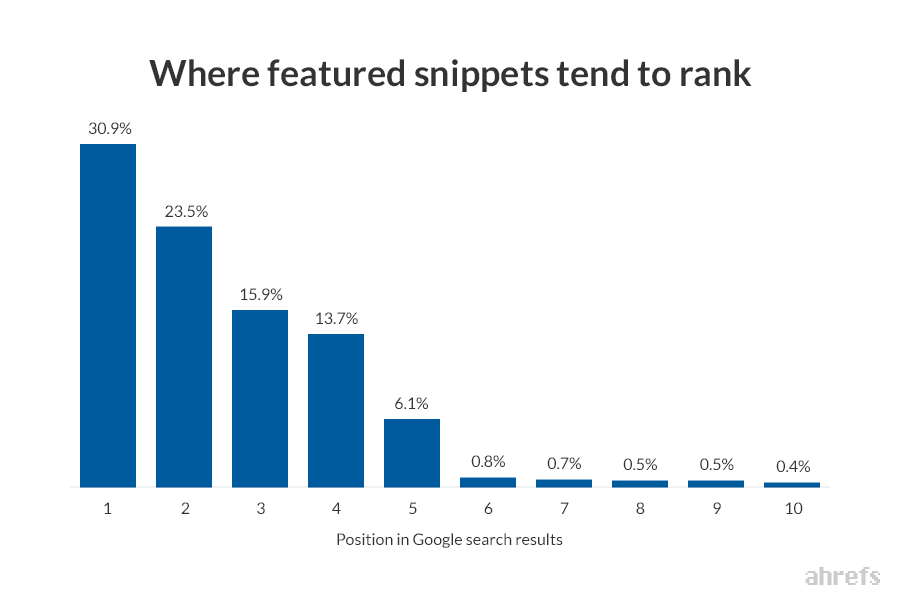
In particular, the majority (90.1% of featured snippets) tend to get pulled from content pieces that rank in the top 5 positions.
It’s all about choosing the right keywords, writing great content for your audience, and providing value. (See trend #4).
B. Focus on Answers to Questions
According to a SEMrush/Ghergich & Co. study of 6.9 million featured snippets and 80 million keywords, only around 7% of generic keywords include featured snippets in the results.
In comparison, 41.59% of keywords with questions include featured snippets in the results – a 480% increase!
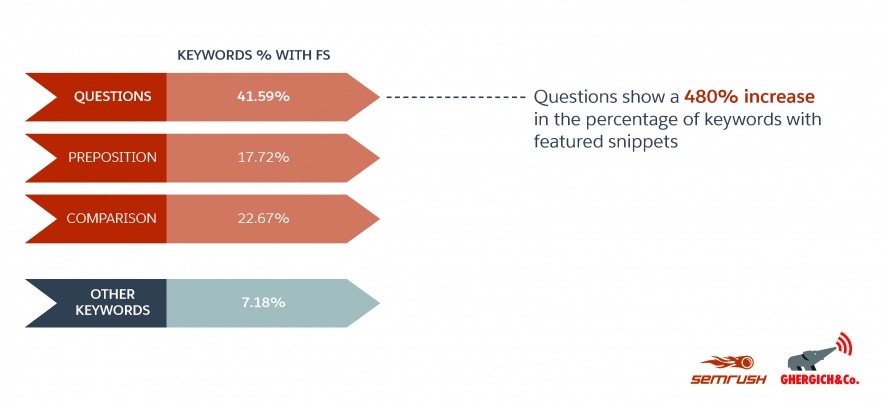
In particular, question keywords almost always include paragraph featured snippets. These types of snippets include a chunk of text that answers the question the user searched for (according to the study, these average out to about 46-84 words in length with a maximum of 370 characters).
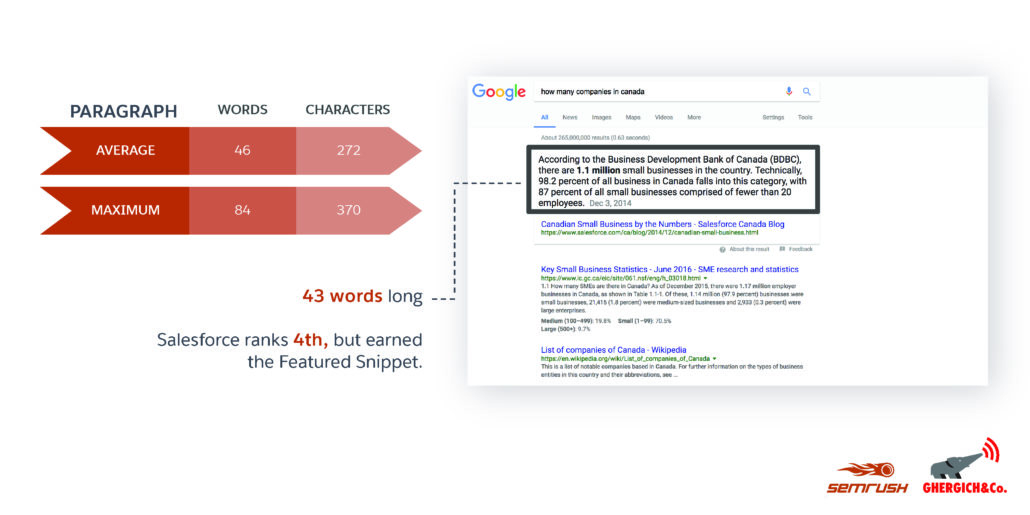
You can thus earn your ranking content a featured snippet by framing short, succinct paragraphs of text as authoritative answers.
3. Create the Highest-Quality Content
In August 2018, Google confirmed a major core algorithmic update that took a full week to roll out.
According to SEOers like Barry Schwartz and Glen Gabe, this update was all about quality. It particularly affected sites that had low E-A-T (expertise, authoritativeness, trustworthiness).
Barry Schwartz studied over 300 affected sites and found that 41.5% of those belonged in the health, medical, wellness, and fitness industries. He nicknamed it the “medic” update as a result.
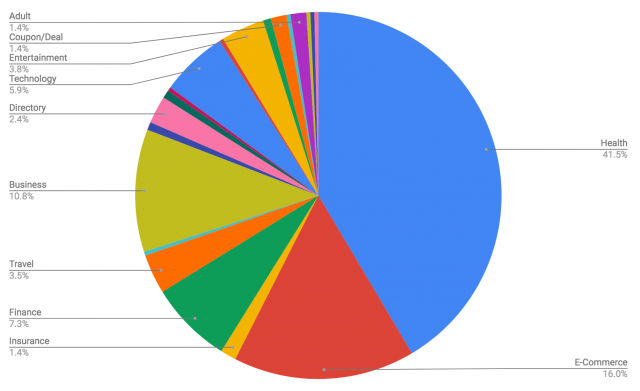
Why were these sites hit hard?
Most health pages belong in the YMYL category – pages that Google says can affect the health, income, happiness, or financial stability of users. Low-quality content on these pages can directly impact people’s lives.
With this update, Google underlined their commitment to serving users the highest-quality content. If you’re not creating the best of the best, you will miss the mark and end up on page 3, 4, 5… or worse.
4. Keep Voice Search on Your Radar
Another SEO tactic for 2018 that we need to keep on our radar for 2019 is voice search optimization.
As voice search technology improves and becomes more accessible, it will become even more common.
According to Stone Temple’s most recent voice usage trends survey, more people than ever are comfortable using voice commands and voice search on their mobile devices.
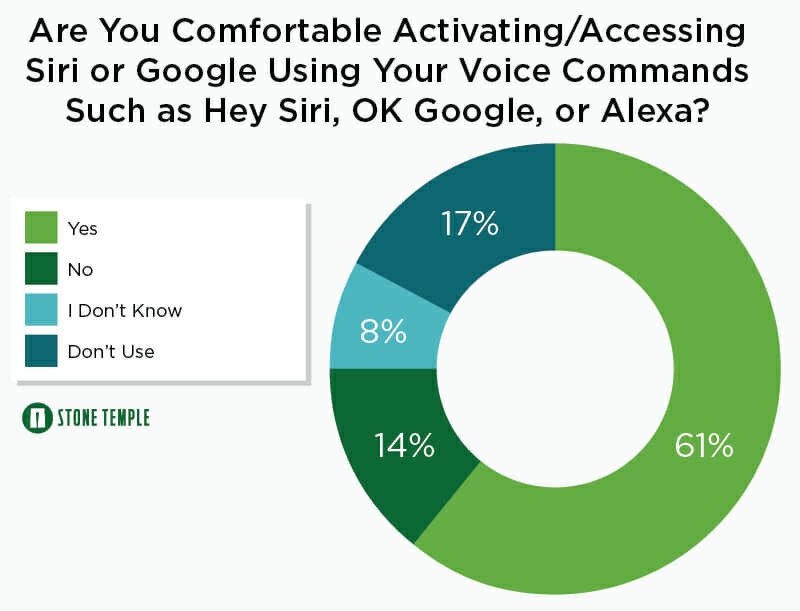
And, a study Google commissioned found that 55% of teens and 41% of adults use voice search multiple times a day, every day.
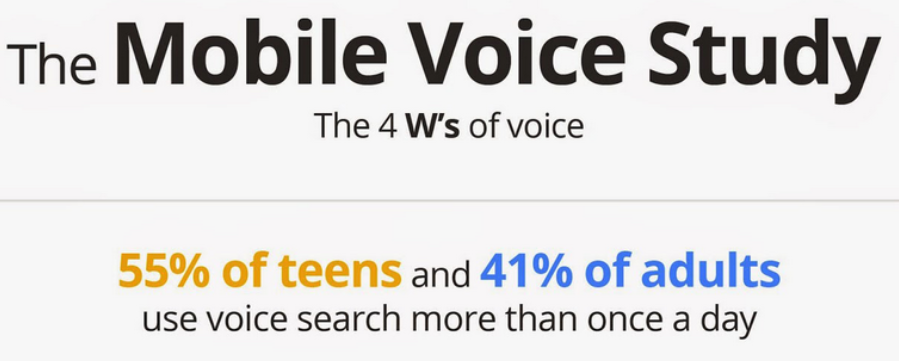
It’s pretty safe to assume these numbers will continue to go up as time goes on, too.
To stay ahead of the game, optimize your content for voice search where it makes sense.
A. Optimize for Local Search
Most voice searches are local. According to Bright Local’s Voice Search for Local Business Study, 46% of those who search via voice are looking for local businesseson a daily basis.
If it makes sense for your brand, use geo-targeted keywords, build up your positive customer reviews, and make sure your NAP (name, address, phone number) are consistent across all of your online business listings.
B. Use FAQ Pages
To rank for questions as well as answers, create high-quality FAQ pages to compile the most common ones you encounter regularly.
C. Make Sure You’re Mobile-Friendly
Finally, to rank for voice search queries, you have to make sure your pages are mobile-friendly. Google will not pull voice search answers from sites lacking in this area!
5. Improve Your UX (and Understand RankBrain) – a MAJOR SEO Trend for 2019
One of the major SEO trends for 2019 is the emphasis on RankBrain. This is the part of Google’s core algorithm that uses machine-learning to serve users better search results based on their search intent.
(Back in 2015, in an interview with Bloomberg, Google revealed that RankBrain is their third most important ranking signal.)
According to Danny Sullivan for Search Engine Land, it works like this:

RankBrain helps the algorithm interpret complex, long-tail search queries and the intent behind them. It can “see patterns between seemingly unconnected complex searches to understand how they’re actually similar to each other.” Additionally, it can “understand future complex searches and whether they’re related to particular topics.”
In other words, it’s smart, and the more data it collects, the smarter it gets about user search intent.
Specifically, RankBrain looks at the context of user searches.
- What are synonyms/related terms for the original search query, and which pages containing these synonyms have relevant information for the user’s search intent?
To figure out if the algorithm returns good search results, it looks at how users respond to them:
- Which user actions indicate the search results satisfy them?
- Low bounce rates (users are staying on the page after clicking the link in the SERP)
- Longer dwell times (users are staying to read more than the first few paragraphs)
- Higher click-through rates (more users are clicking on results in the SERP)
- Which actions indicate the search is unsatisfying or the results are not what the user had in mind?
- High bounce rates (users are bouncing back to the SERP after clicking on results)
- Low dwell times (users aren’t staying on pages to read past the headline or introduction)
- Low click-through rates (users aren’t clicking on results)
To simplify it further, let’s borrow a good comparison from Backlinko’s detailed RankBrain guide.
Before RankBrain, Google looked at instances of keywords on a page with zero context. It guessed at whether the results it returned were in the realm of what you meant:
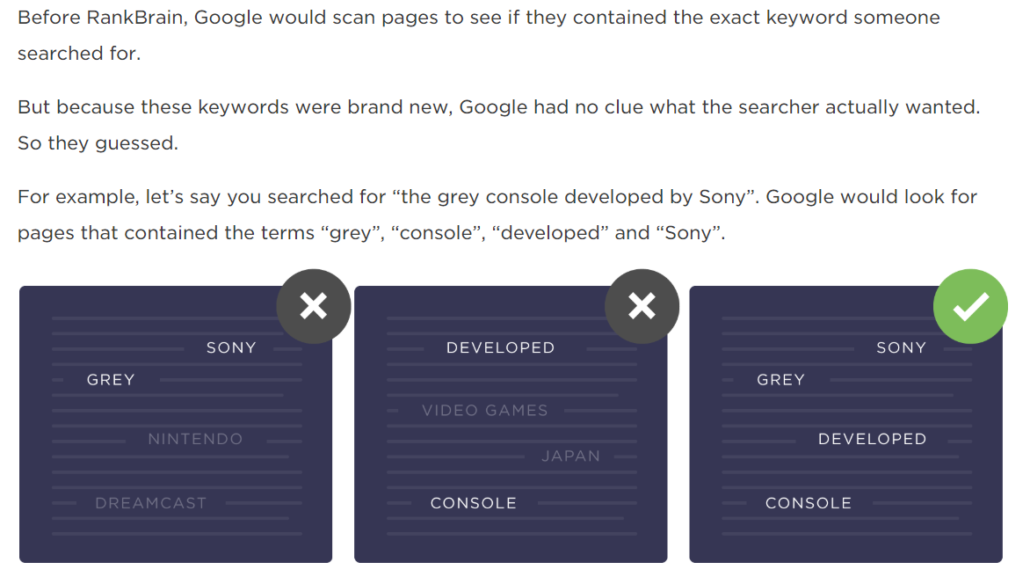
After RankBrain, Google knows what you mean when you enter search queries that could have more than one meaning. It gets your intent behind the search:
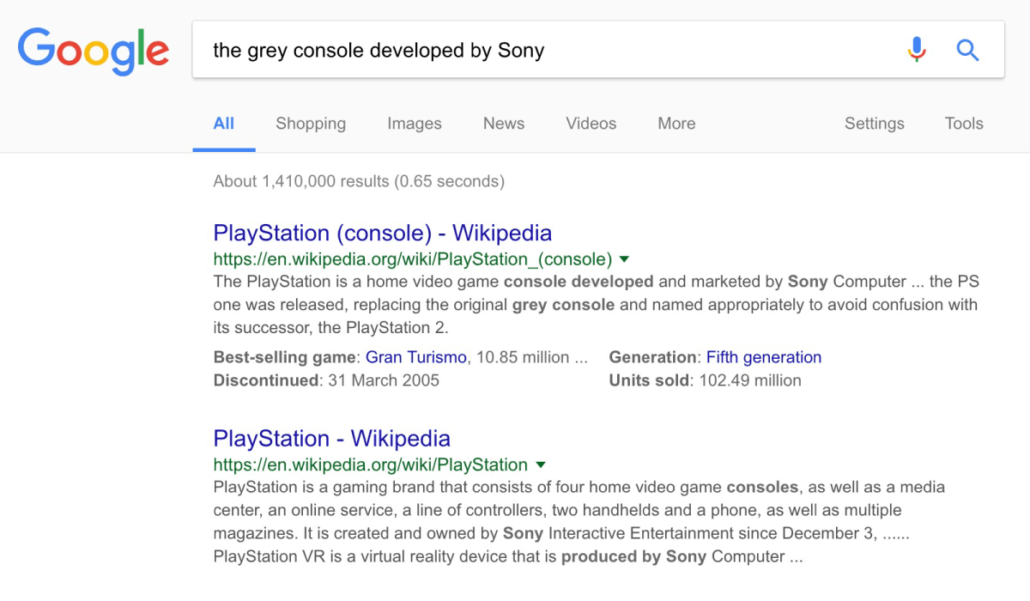
Understanding RankBrain is one thing. Using that knowledge to your advantage is another. The savviest content marketers will be on top of this for their SEO strategy for 2019.
A. Optimize Your Metas and Headline to Be More Enticing
Since RankBrain looks at the actions and context surrounding a search, use that to help boost your rankings.
For example, what can you do to increase click-throughs on your search engine listings? Pay attention to your meta titles (your H1/main headers) and your meta descriptions for each page. If they’re descriptive and enticing, you may pull in more clicks, which can equal votes for your content in the SERPs.
B. Pay Attention to Page Usability
Once users click on your result in a search, you want them to stay on the page. One way to do that is to improve your page usability. In other words, make it as easy to use as possible.
To learn more about usability, user experience, and how to make it better, the resource Usability.gov is a great starting point.
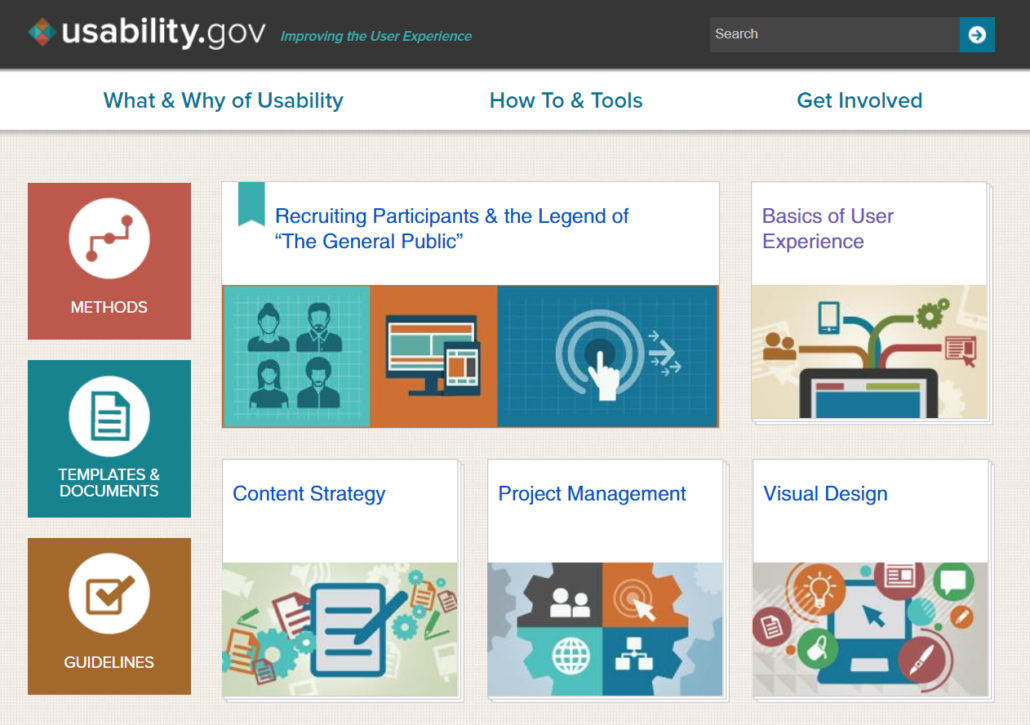
SEO is constantly changing, so it’s important to stay updated – and stay relevant.
In 2019, some SEO trends will roll-over from 2018, but others are based on the future of technology and Google’s recent updates.


